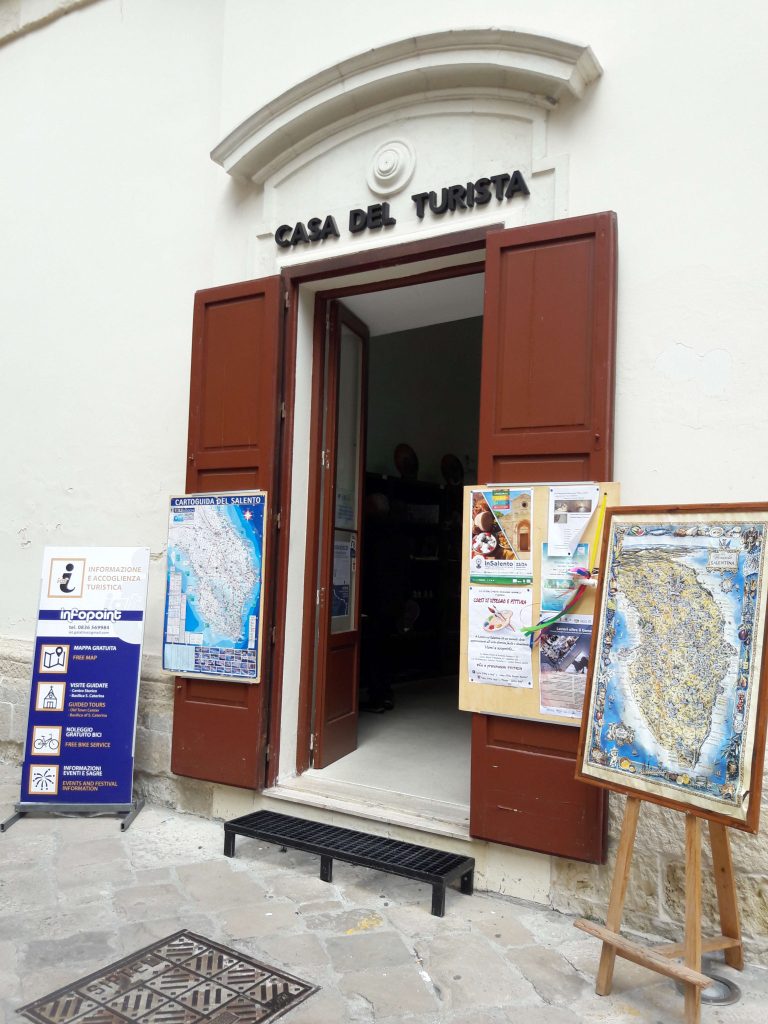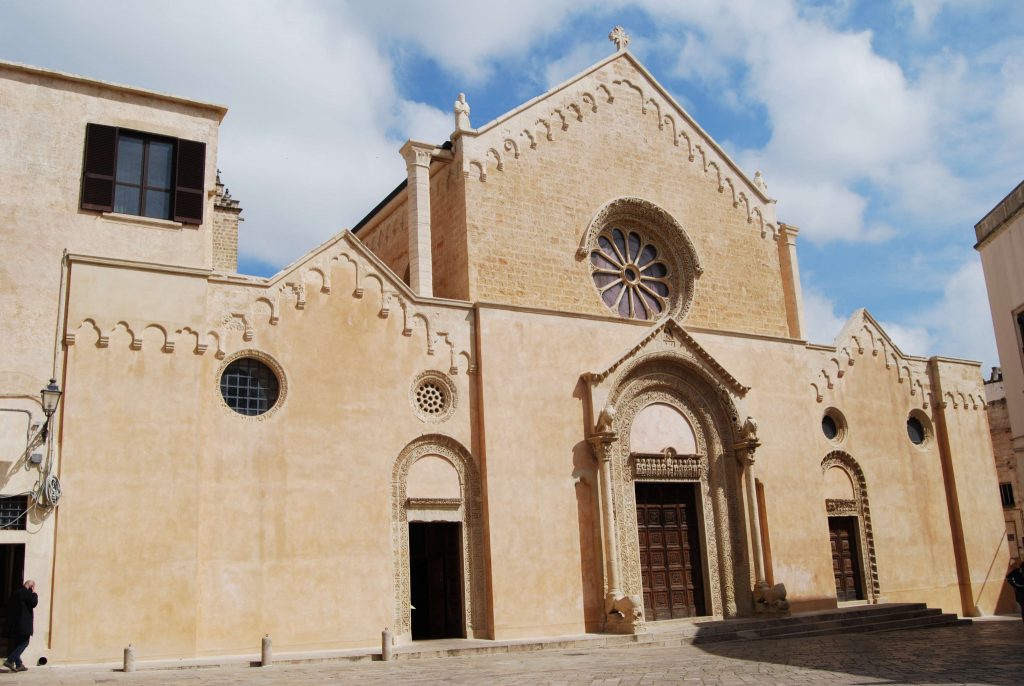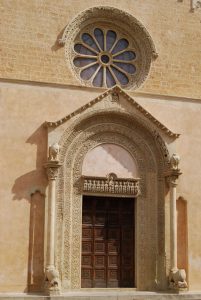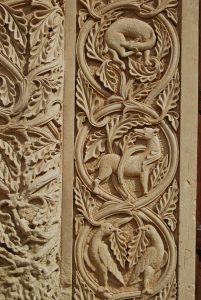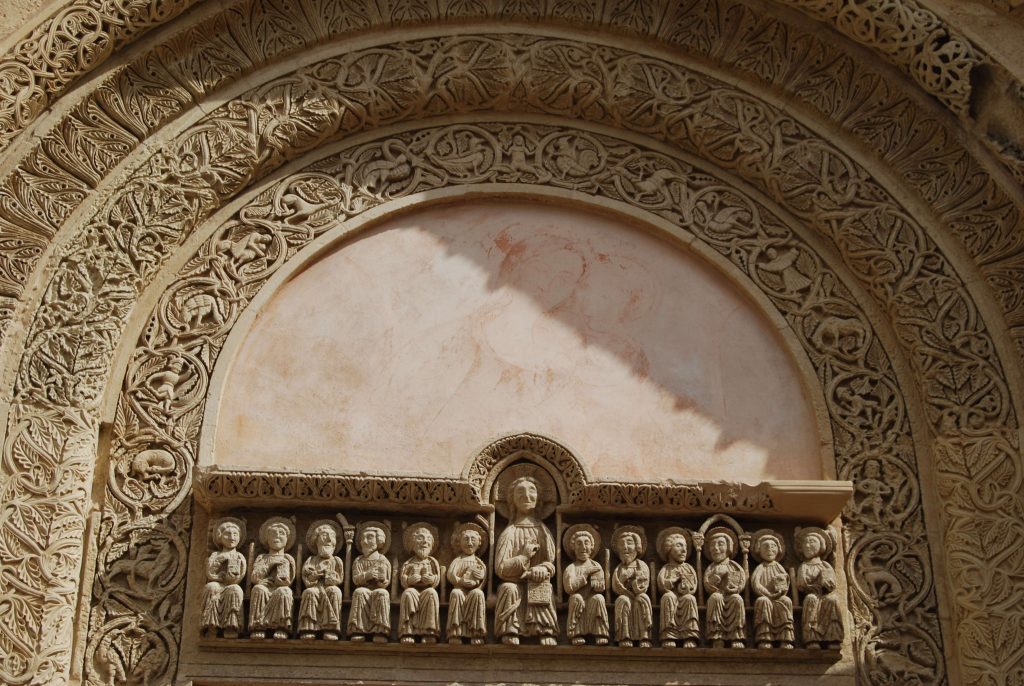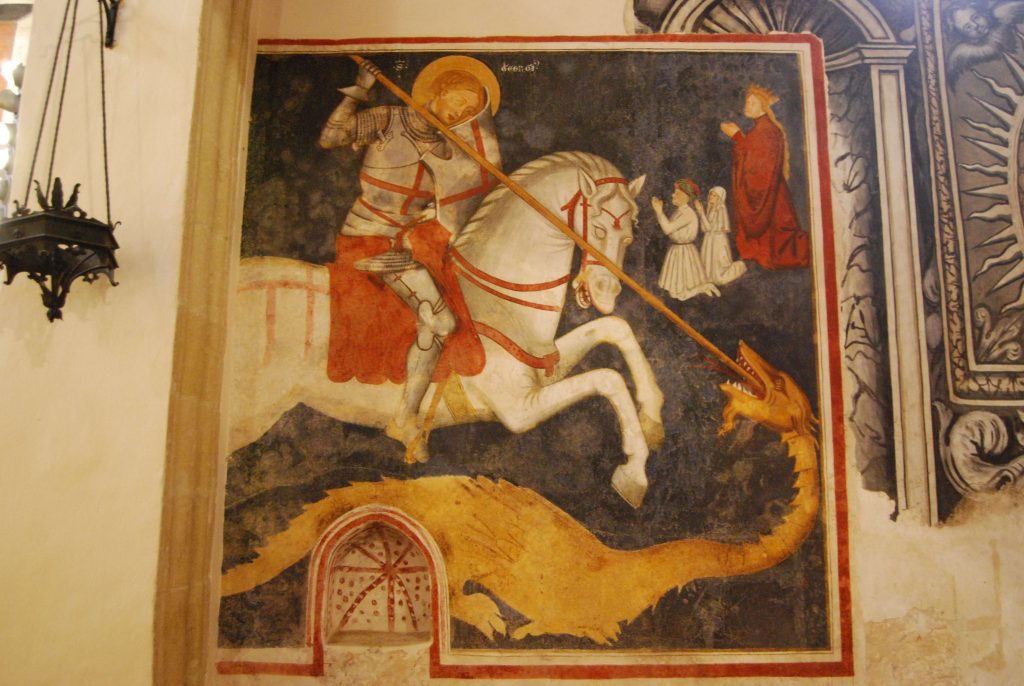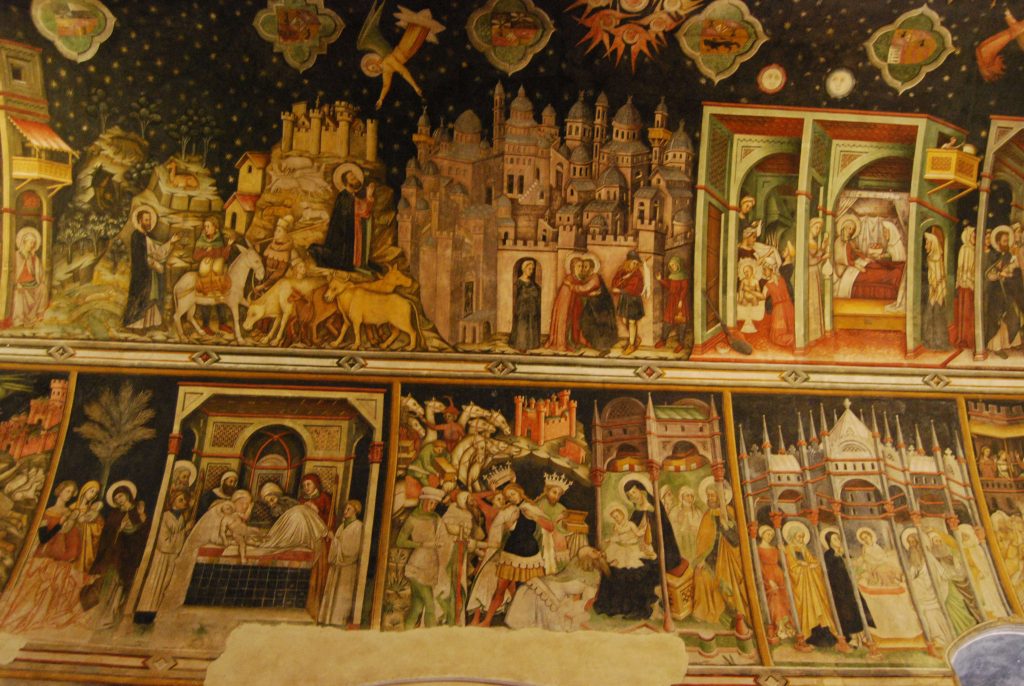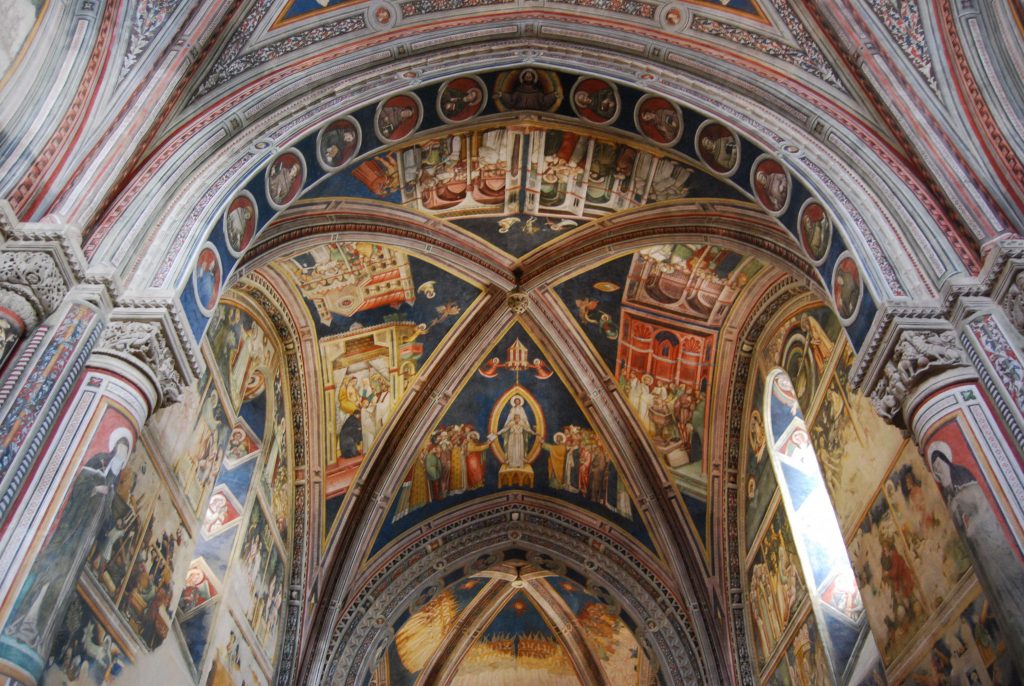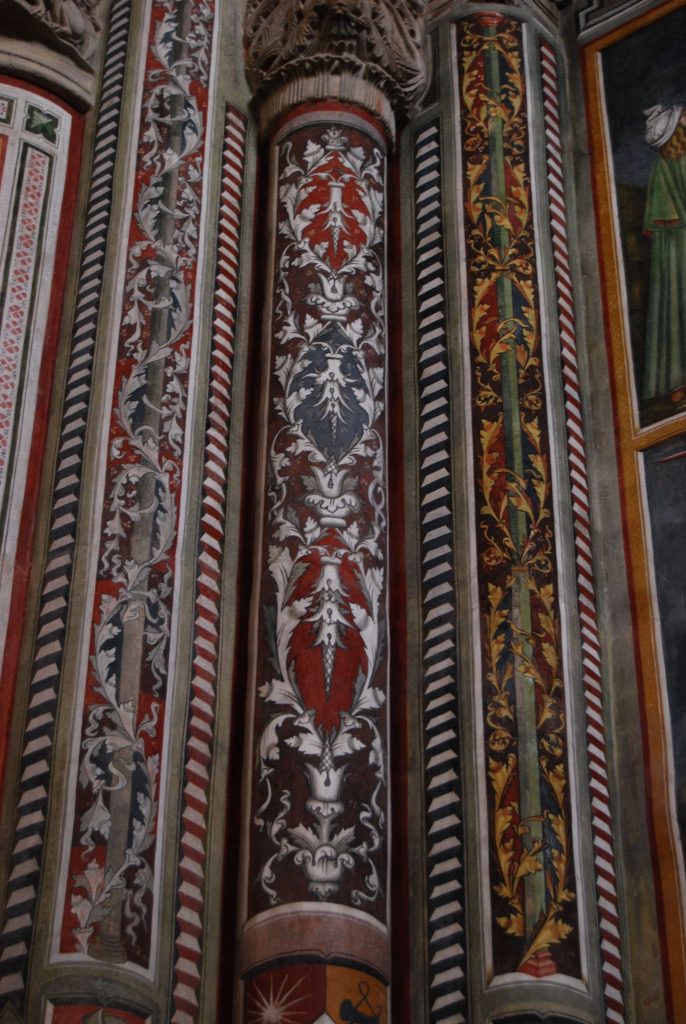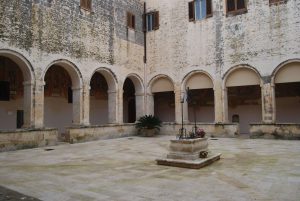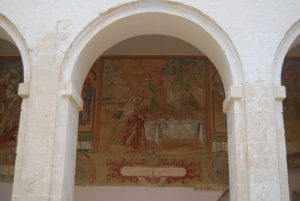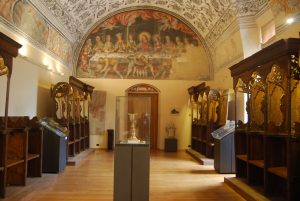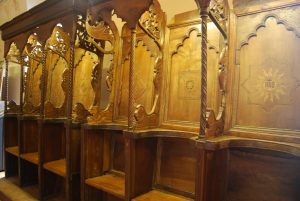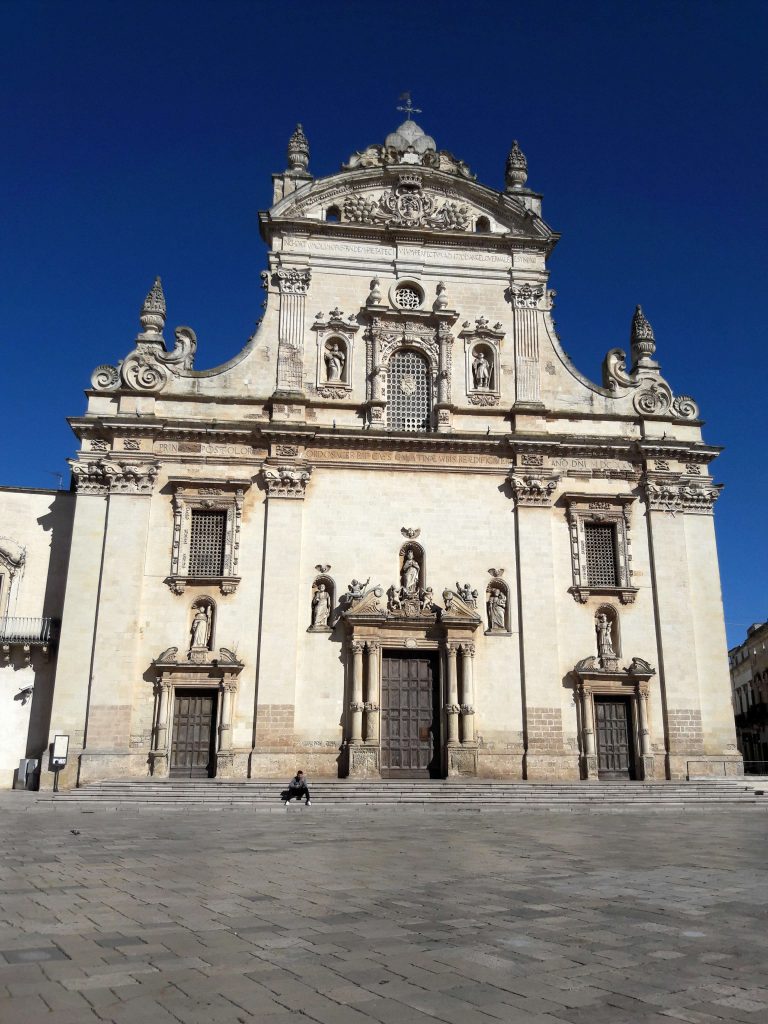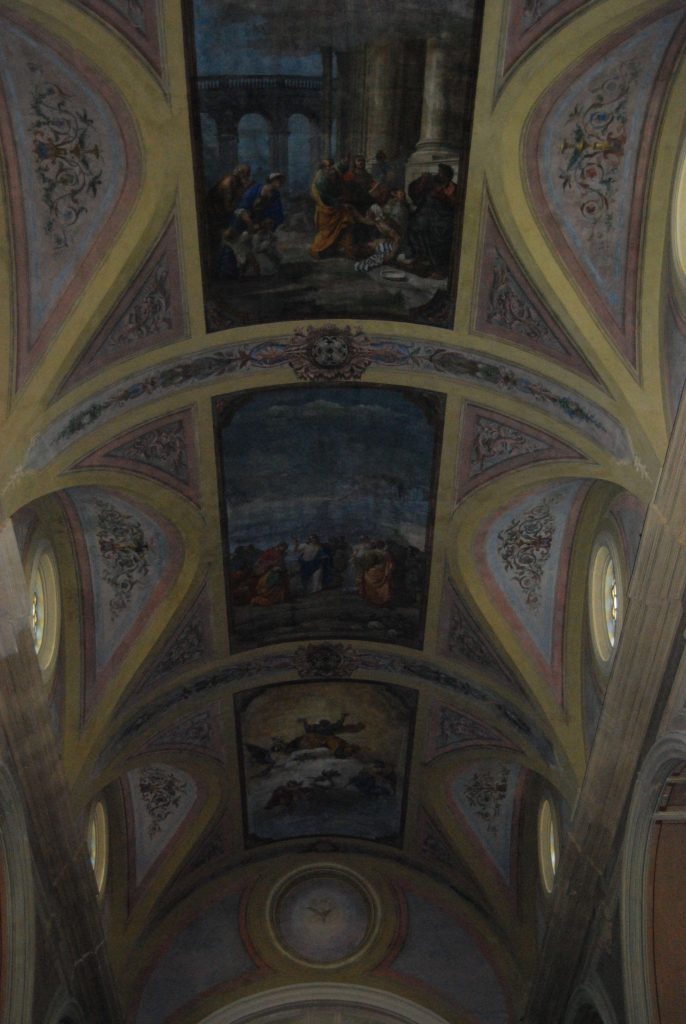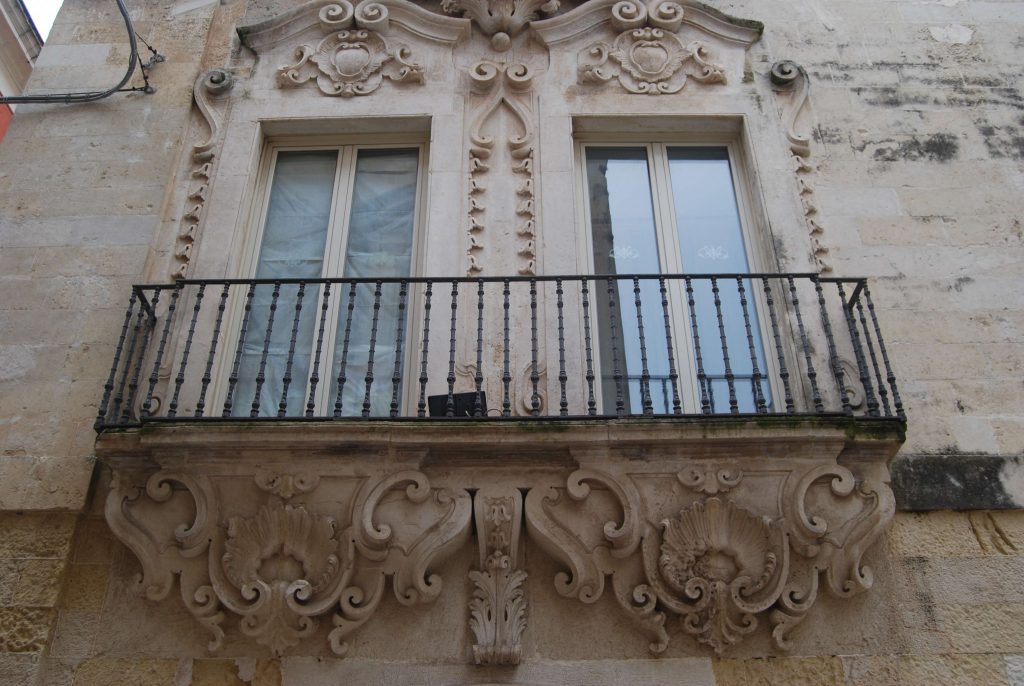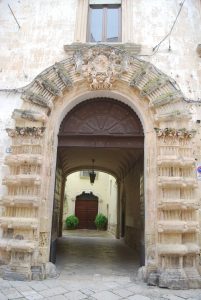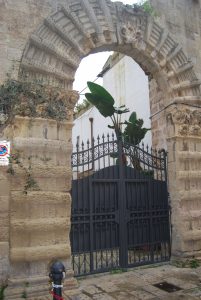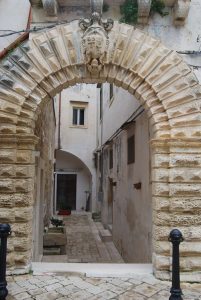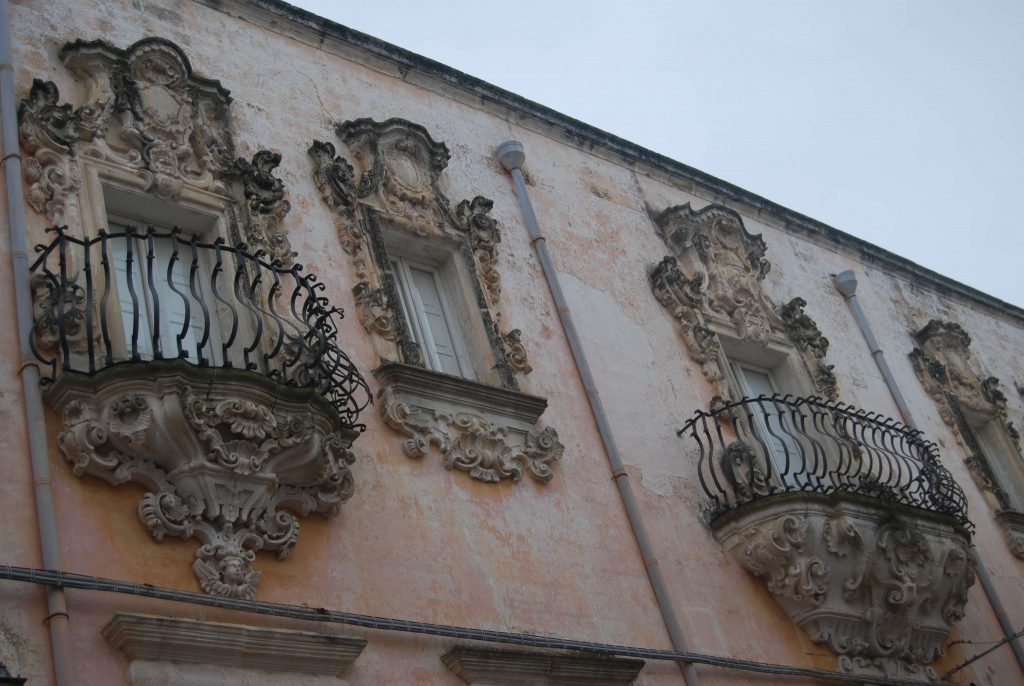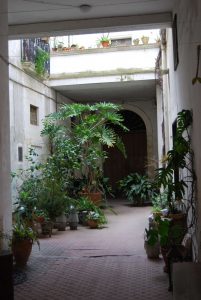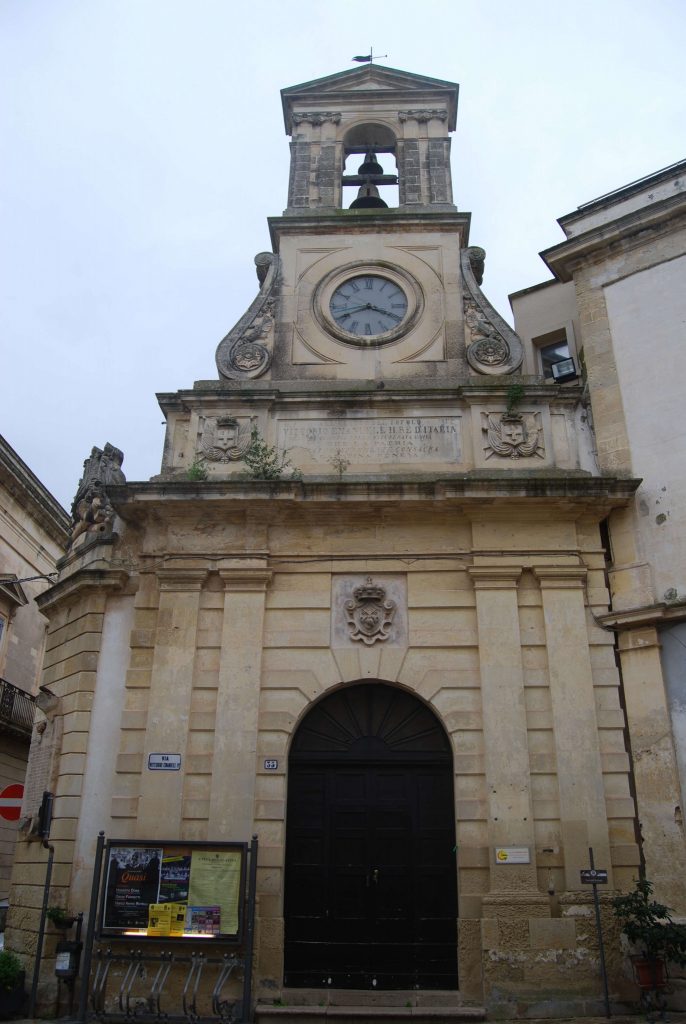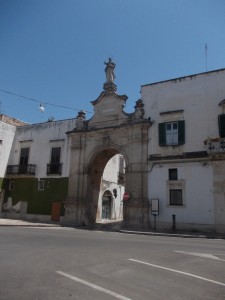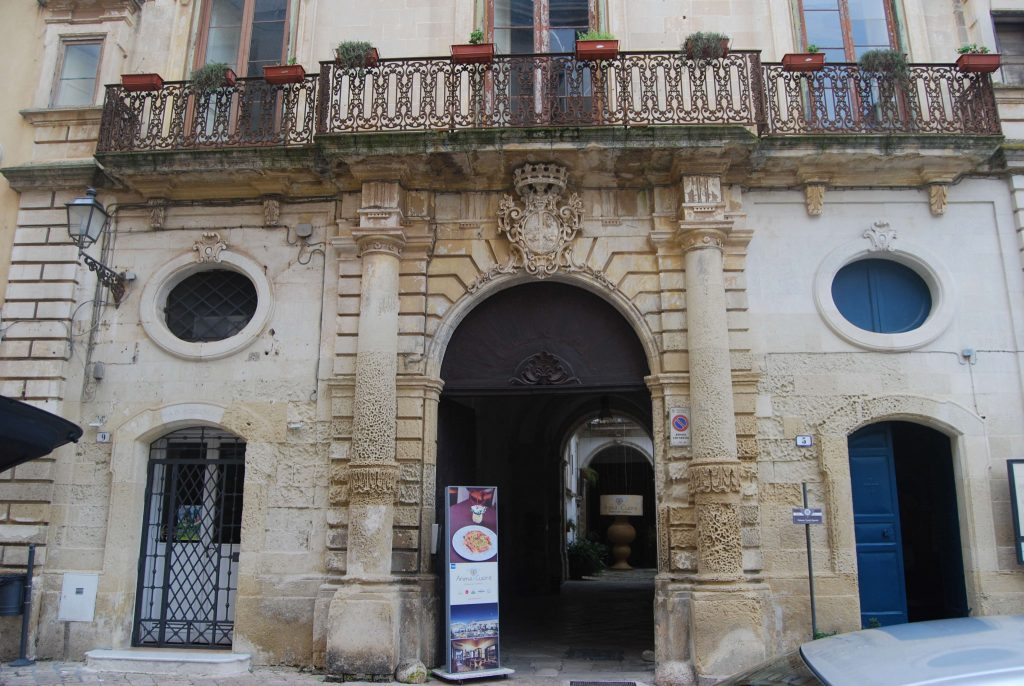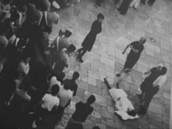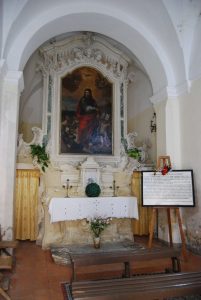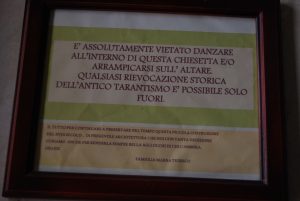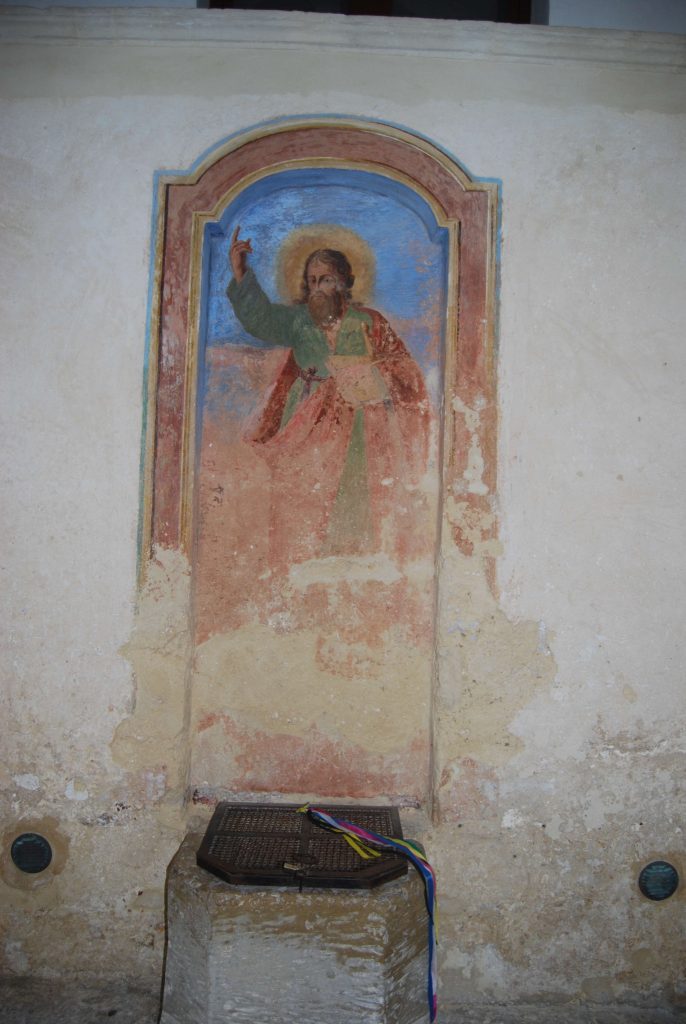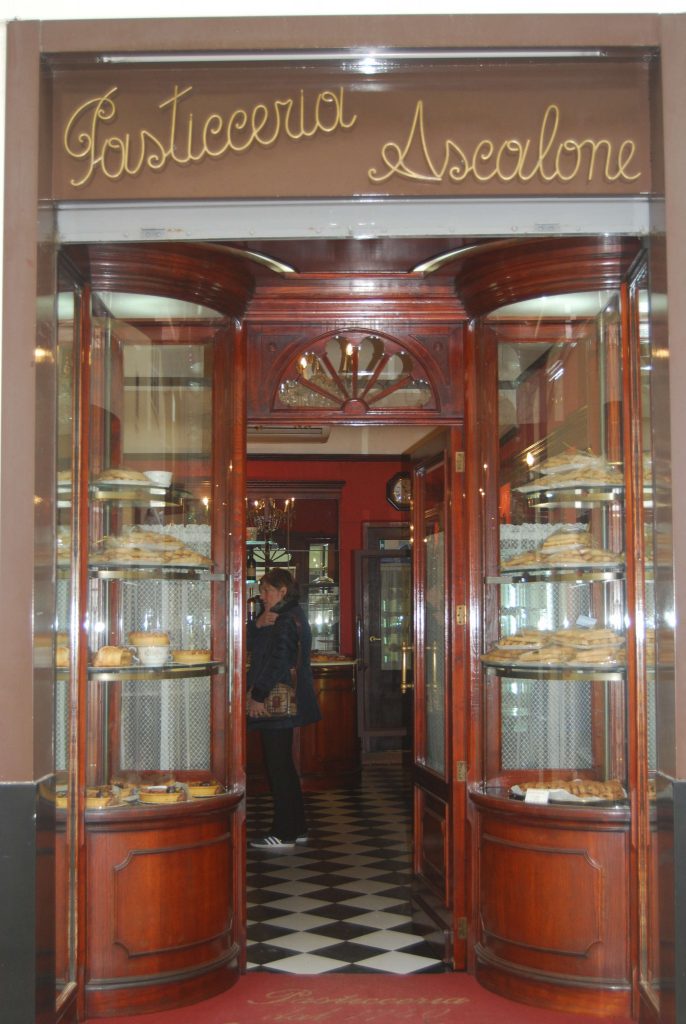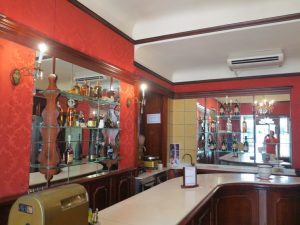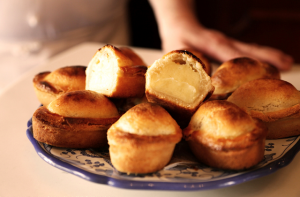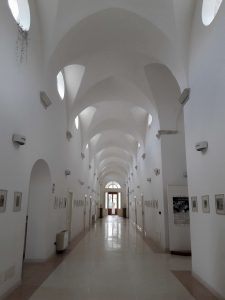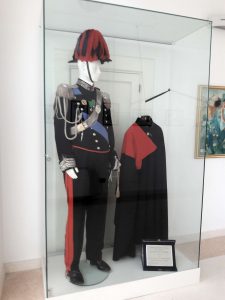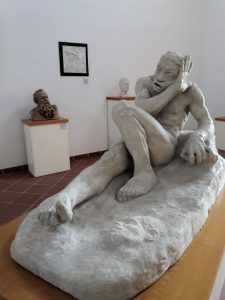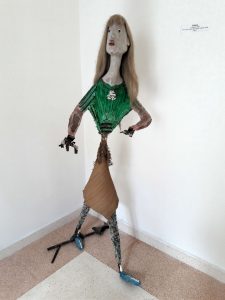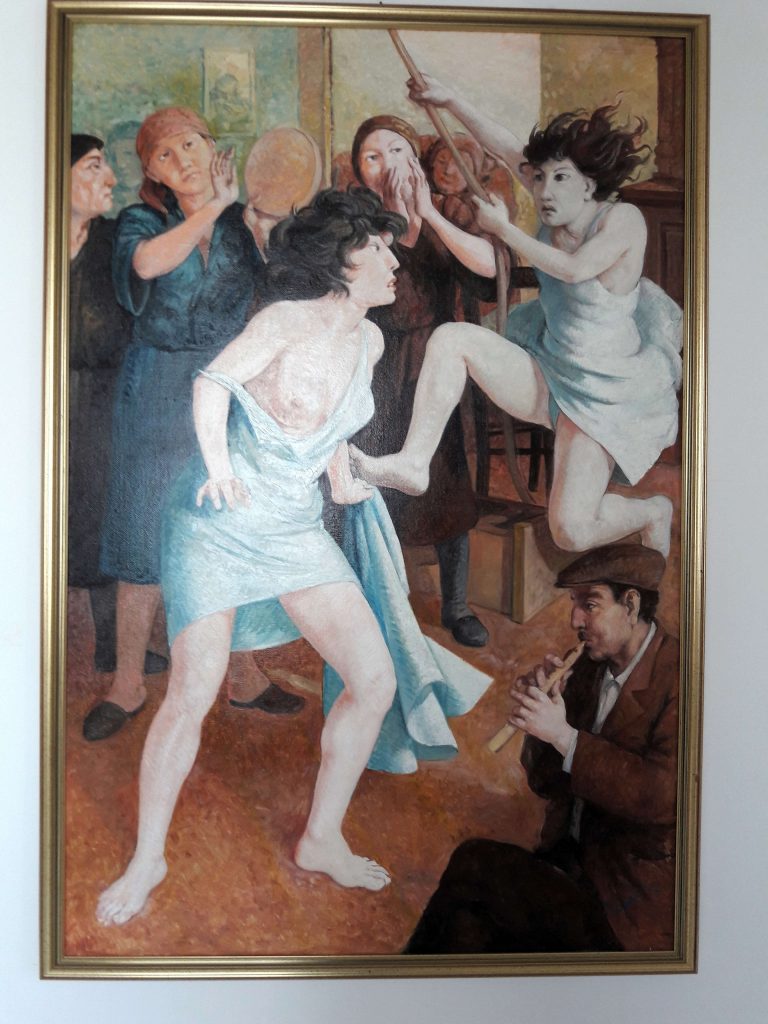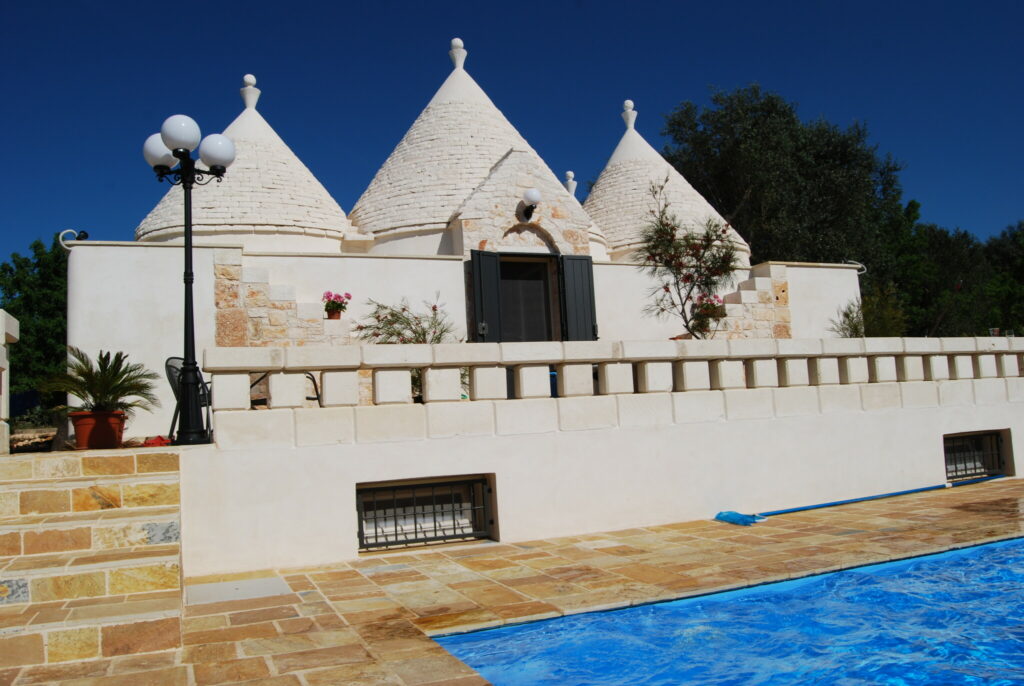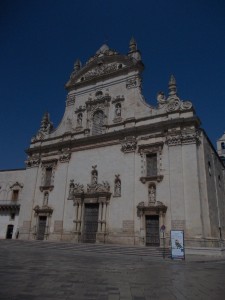
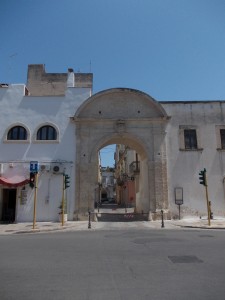
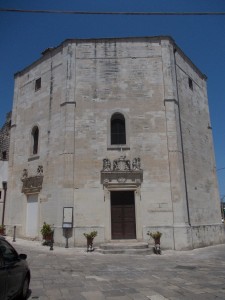
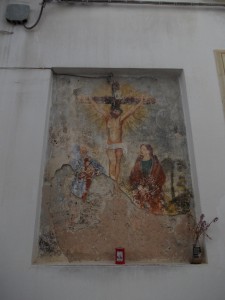
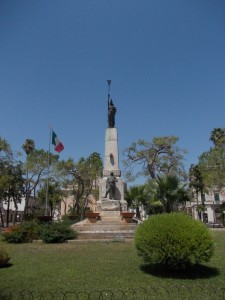
Galatina is about 30 kilometres south of Lecce. It is one of the larger towns of the Salento (population 28,000), easily reached by road or by rail from Lecce on the Ferrovaria Sud Est via Zollino; the station is five minutes walk from the centre.
Galatina is the highlight of the many attractive towns in this area. The city council is clearly making a big effort to promote Galatina as a visitor destination. It is clean and well maintained, and has an excellent tourist information service. The town seems massively undervalued and underdeveloped as a tourism centre. It is inevitably overshadowed by nearby Lecce, Otranto and Gallipoli, but we place it on a level with these as somewhere to spend time when in Puglia. We unhesitatingly recommend it as a place to visit during a day trip (it is about an hour's drive from Ostuni) or as somewhere to stay and use as a base for touring the Salento.
There is a very good Tourist Information Centre in the middle of the old city. This is open mornings and late afternoon/evening daily, including Sundays and Mondays, throughout the year. You can pick up street maps and booklets including some in English. The staff (volunteers mainly) are enthusiastic and run guided walking tours if you want to do this.
Whilst the old town is not filled with cafes and restaurants, there are places you can get refreshment scattered around. Just on the edge of the old town is the more recent tree filled Piazza Alighieri which contains a number of cafes and a large pizzeria. Two restaurants we have tried personally - Corte del Fuoco, located on Piazza S. Lorenzo, not far from Piazza Orsini and the Basilica; and Anima e Cuore, which is upstairs at 7 Corso Garibaldi, just off Piazza San Pietro, up stairs inside the courtyard where Saint Paul's well is located. Both these have good food, interesting premises and moderate prices.
Galatina was previously known as San Pietro in Galatina as it was founded in the 12th Century in the area where St. Peter stopped on his way to Rome from Antioch. The historical centre is pretty extraordinary, interesting streets connecting a series of small squares, all containing hugely impressive buildings in a highly decorated baroque/rococo style, reflecting the wealth of the town in the seventeenth and eighteenth centuries. However, the top attraction of Galatina, which makes it really special, is the Basilica di Santa Caterina d'Allesandria with its astounding internal decoration of fifteenth century frescoes.
The Basilica di Santa Caterina d'Allesandria
This is the town's earliest church, built in 1361-1391 by the Orsini family's Count Raimondello, who had brought back a relic of Saint Catherine (her finger, which is preserved in the church) from the Holy Land.
The church occupies one side of the small Piazza Orsini. It is constructed in Gothic/Romanesque style in contrast to other, later buildings in this part of Puglia. The frontage is very simple, although the main doorway has some beautiful decorative details including a carved lintel depicting Jesus Christ and the twelve Apostles; and there is an attractive rose window above.
However, step inside and you will encounter an enormous and complicated interior, and every surface decorated with elaborate frescoes. The frescoes are like a picture gallery, and extend over the walls, pillars, arches, ceilings etc. Commissioned by Maria d'Enghien, widow of Count Raimondello, in the first half of the fifteenth century soon after the church was built, they consist of a series of pictorial cycles: the Apocalypse; Genesis; the Sacraments; the Evangelists; the life of Christ; and the life of Santa Caterina.
This major project involved specialists from Naples and elsewhere who were students of Giotto. The cycles of frescoes are regarded as second only in quality and significance to those in the Basilica di San Francesco in Assisi.
The church is usually open 8.30am-12.30pm and 4.00pm-6.45pm. You will need 2 euros in euro coins to activate the illuminations inside; definitely do this otherwise you will miss the impact of the frescoes. A few photographs are shown here. However, this website link gives more information and some wonderful photographs of the frescoes.
Immediately next to the Basilica is an insignificant doorway. Make sure you go through this. It leads into a beautiful cloistered area with attractive 18th century frescoes, this was part of the convent attached to the Basilica.
At the far side of the cloisters is a small museum of vestments and objects linked to the Basilica in an interesting and imposing room (this used to be the dining room of the convent) with wooden seating and more frescoes. This is open when the Basilica is open, even if the door is closed - just go in and pay 1 euro to the person at the desk inside. An interesting 10-15 minute visit.
The Church of Saint Peter and Saint Paul
The Chiesa di SS Pietro e Paulo is Galatina's most imposing religious building. In pure baroque style, its frontage dominates the town's central piazza (Piazza San Pietro).
It was built in 1633, but following the earthquake in 1743, it was extensively reconstructed over the next 30 years. Then in 1875 the interior was completely renovated, although earlier frescoes, paintings and altar decorations were preserved. There are various altar paintings and sculpytures, plus a stone on which Saint Peter reputedly sat. The ceiling is especiallt attractive.
It is usually open except in the afternoons,
Palazzi, courtyards, doorways and balconies
A key charm of Galatina for visitors is just walking around the elegant cream-coloured centro storico, where from about 1500 onwards, rich merchants, traders and the church built residences (palazzi) in the intricately (and expensively) decorative baroque style. The essence of baroque architecture is the demonstration of wealth and power - this is expressed in doorways and portals leading into domestic courtyards, facades decorated with designs and sculptures, elaborate balconies etc. The central area contains 40-50 examples - a useful booklet giving key details in Italian and English can be bought at the Tourist Office for 2 euros.
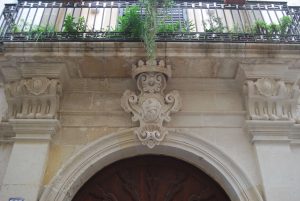
Some palazzi are now used as hotels, restaurants, businesses and public buildings including the Police Station and Tourist Information Office; but most still seem to be residences, mainly apartments.
A later building of note is the Torre dell'Orologio (Clock Tower) in the centre of the old city - this was built in 1879 to celebrate the unification of Italy and is dedicated to King Vittorio Emmanuele II, hence the coat of arms of Savoy on the main frontage. The clock has the original mechanism and still has to be wound by hand.
The 15th century walls of the city have now gone, except for some fragments; although their outline is obvious in the street pattern. Three of the original city gateways survive = Porta Luce, Porta dei Cappuccini and Porta Nuova. Porta Nuova (pictured below) is actually the oldest but was totally renovated in the 19th century, hence the Bourbon crest above the arch. It has a statue of Saint Peter on top, so is often referred to as Porta San Pietro
The chapel of Saint Paul and the cult of tarantism
In the middle of Galatina, just off the main Piazza San Pietro, is the Chiesetta di San Paulo. This tiny chapel is a single small room behind an obscure blue doorway opening directly from the street - not to be confused with the much more impressive porticoed gateway to the Palazzo Tondi-Vignola (built in 1795) into which the chapel structure is integrated.
The significance of this chapel in Puglia is very much greater than its size suggests - it is the traditional birthplace of tarantismo and of the related music/dance - the tarantella and the pizzica - which is now a massive part of Puglia's cultural scene.
Tarantism is a cult with possible origins in pagan, Greek and Roman times. In Puglia, from the middle ages onwards, it developed as a supposed cure for mental and physical sickness, linked rightly or wrongly to the bite of a spider, quite frequent among peasants (mainly women) who were working in the fields. The afflicted person (tarantata) danced and writhed wildly to repetitive music (traditionally tambourine, violin and accordion) for hours, sometimes days. The music is constantly frenetic, consisting of simple pounding rhythms, repetitive tunes on four or five notes, designed to induce a trance-like state in the tarantata, encouraged and supported by a circle of friends and relatives.
The phenomenon was common in many places. The specific connection with Galatina is because Saint Paul, when he stopped there on the way to Rome, is said to have created a well with water which could cure animal bites (Saint Paul is the saint who supports victims of insect, snake and animal bites). The well is located behind the chapel, accessed via the courtyard of the Palazzo. Tarantate, after dancing frenetically at home or nearby, were brought there specifically on the celebration of Saint Peter and Saint Paul, the city's twin patron saints, on 29 July each year, to drink water from the well. This combination of religion and pagan rites seems to have been established deliberately by the church as part of the counter-reformation in the late 1500's - concluding that if it could not suppress this heretical practice it could assimilate it!
This rural tradition continued right up until the 1960's. Photographs and old films show the apparently desperate dancing of women, young and old, being carried to the well and into the chapel by their relatives when they collapsed. There are photographs, videos and illustrations in a section of the Civic Museum (see below). The sight is quite disturbing to modern eyes.
For about 20 years, the practice was in decline, and to a large extent discouraged as representing outmoded and irrational traditions unsuited to the modern age. From about 1980, the tradition has been replaced by an up to date form of festival, which attracts many visitors to Galatina - however the concerts, fun fair, fireworks, modern pizzica music/dancing and elaborate illuminations are wrapped around quite serious and emotive re-enactments of the old form of tarantella, barefoot white-clad women and white blankets on the ground, inside and outside the chapel. This takes place on the festival of Saint Peter and Saint Paul, 28-30 July each year, with special focus on 29 July.
You can usually just go inside the chapel (but a sign prohibits dancing there!). You can also go into the courtyard of the Palazzo (which is privately owned) and see the well, usually decorated with the red, white and yellow ribbons associated with the tarantella.
After 1990, there was a revival of interest in the tarantella, especially among young people, as a folk music and dance tradition in Puglia. The pounding pizzica beat and pizzica dancing displays feature throughout Puglia in local events and concerts. However, pizzica has also been adopted into popular music of various genres (rock, hip hop, techno etc), presented in large scale staged concerts with musicians, singers and dancers all combined. In the Salento during August there is a series of massive outdoor events in the form of rock concerts, La Notte della Taranta - see their website for details. Several towns are involved, varying each year (some years including Galatina); the finale is in the small town of Melpignano which instituted this festival.
Pasticceria Ascalone - where the pasticciotto was invented
In the middle of the centro storico, on Via Umberto I, is a small pasticceria which is where it is reputed Puglia's famous and ubiquitous pastry, the pasticciotto, was invented - or more strictly speaking was "discovered". Local baker Nicola Ascalone used leftovers of crema and pastry from a more elaborate concoction, and came up with a simple sweet dumpling which was an instant success - pasticciotto can be translated as a hash or a mess!
The basic pasticciotto is an enclosed pie of short crust pastry wrapped round a filling of crema (a typical Italian filling, like a sweet egg custard). However various fillings are now common - almond paste, pistacchio, amareno, even chocolate). The pasticciotto is especially associated with Lecce, which adopted it as a sort of symbolic city dish; but it is available all over Puglia, often promoted as a specifically local variety eg Pasticcotto Ostunese.
But this small premises in Galatina, still in the Ascalone family ownership after 300 years, is acknowledged as the traditional source. It is more like a small bar inside than a pasticceria. A few cakes and tarts are on display, but if you ask for pasticciotti, they will be served warm, directly from the bakery behind the shop (you may have to wait a few minutes). They are truly delicious, at any time of day.
The pasticceria is open weekdays, mornings and evenings. Not to be missed if you visit Galatina.
The Civic Museum
The Museo Civico di Pietro Cavotti is a simple museum and art gallery located in a former convent attached to the Chiesa di Santa Maria della Grazie on Piazza d'Aligheri. The building also accommodates the town library and a cultural centre. The Museo is on the first floor. It is free, and open mornings only Tuesday and Wednesday, mornings and evenings Thursday to Sunday, closed on Mondays.
The interior is light and spacious, with a long main corridor and some large rooms used for special temporary exhibitions. There are displays about some of Galatina's former citizens and celebrities, and various historic items. A room showing modern art by local artists and sculptors is colourful and dramatic. A room contains the work (mainly drawings) of Pietro Cavotti a local artist after whom the museum is named.
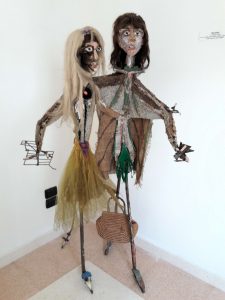
One corridor is devoted to the tarantism cult and it expression in Galatina, where it is thought to have originated and has had special associations for centuries. This includes some dramatic colourful paintings.
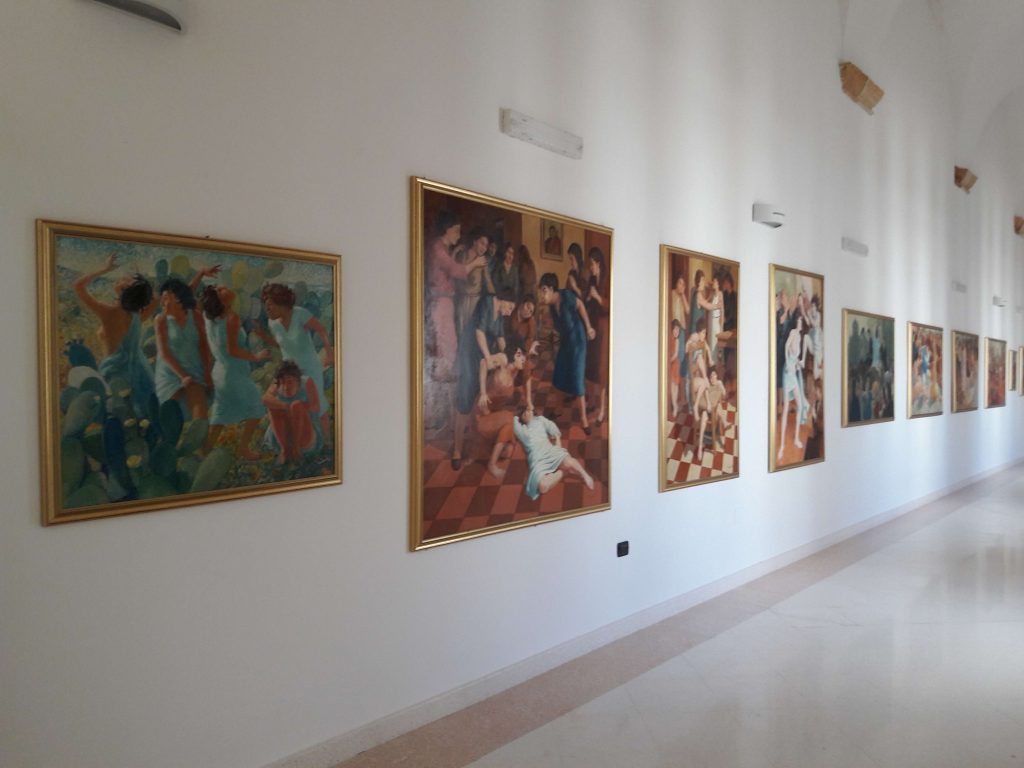
You can spend a few minutes or a couple of hours here, depending on your interest. The tarantism section alone makes the museum worth visiting..

